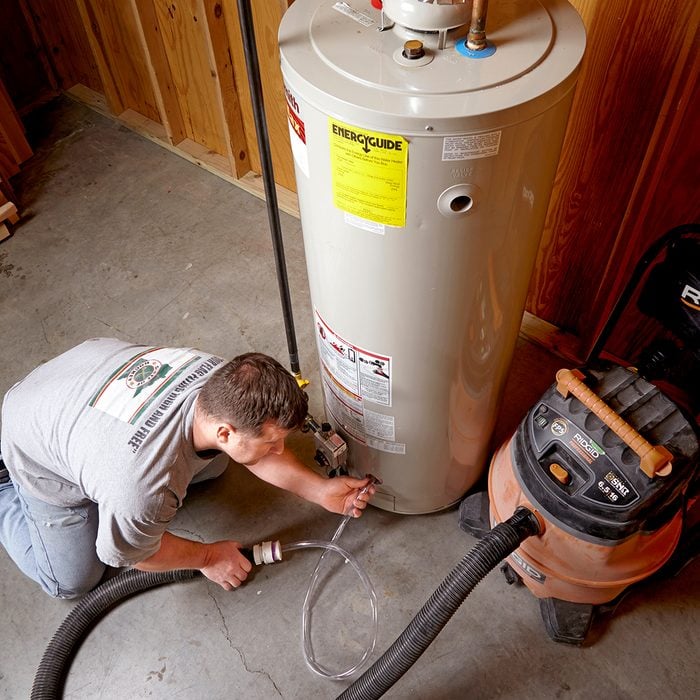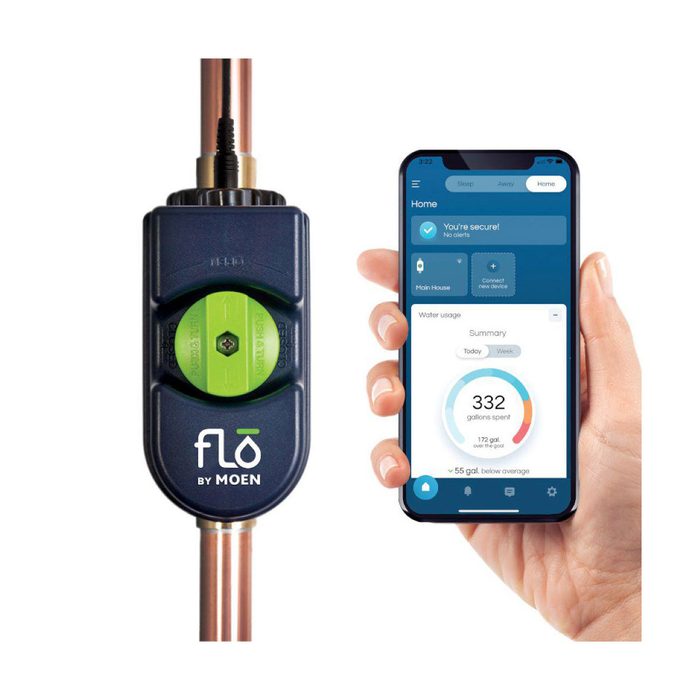3
/
7
Plumbers Flush Their Water Heater Regularly
If you find yourself standing in a cold shower every morning or hearing weird sounds coming from your water heater, it might be time to ask yourself if the unit has been flushed lately. Or ever.
“You should (flush your water heater) once a year,” says Jake Romano of John the Plumber in Burlington, Ont.
Why is this necessary? According to Romano, over time sediment builds up at the bottom of your water heater tank. This sediment can damage the appliance, making it inefficient or even inoperable. Flushing is particularly important in areas with hard water, adds Mulder.
Fortunately, performing this annual to-do is not complicated, Romano says. And while you can certainly hire a plumber to flush a water heater on your behalf, many DIYers are perfectly capable of doing the job.
4
/
7
Plumbers Use a Smart Device to Check for Leaks and Drips
While it is certainly convenient to tell Alexa to order cat food or play your favorite song, the best smart device features help minimize genuine home-related problems — like plumbing leaks.
Mulder, for example, uses a smart, WiFi-enabled leak detection device to monitor his home’s plumbing system. If a leak or drip is detected, the device immediately shuts off the water and sends a notification to his phone. That lets him tackle the repair before it becomes a catastrophe.
“(The device) basically monitors for fluctuations in water pressure and any type of leaks that may occur,” he says. “It is a really useful device.”
If you’re not ready to add a smart home leak monitor, remember to keep an eye out for leaks and drips. Romano says this is typically done by simply listening for the sound of rushing water or that tell-tale drop-drop sound. You can also go through your home and check each faucet.
“The sooner you catch stuff with good routine inspections, the cheaper it is to fix,” he says.
$399.99 at Home Depot
5
/
7
Thomas von Stetten/Shutterstock
Plumbers Always Use a No-Frills Plunger
Sometimes, back-to-basics is best. Case in point: toilet plungers. You can buy all sorts of gimmicky, overly engineered plungers, but the ones that work best are old-fashioned plungers that cost less than $8, says Romano.
Why? Because they quickly and effectively do the job they are meant to do — unclog a toilet. Plus, they are easy to clean. “Fancy” plungers, with their air holes, tempered handles and drip-free magnetic collars, cost more, and don’t do anything to help make plunging more pleasant. Save yourself the trouble (and the $20) by sticking to the original version, even if it doesn’t look as good in the corner of your bathroom.
On a related note, when you’re shopping for a plunger, add a basic pair of safety goggles to your cart, says Romano. Plunging can be an extremely dirty job (need I say more?) and you’ll want your eyes protected.



























